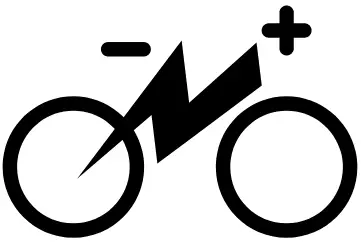Cycling has the tendency to bring out the obsessive in everyone. The passion riders feel for their bikes can lead to them seeking parts that look the best or enhance performance. There is one area that riders are exploring that you can’t see: what’s inside the tires.
For years, racing cars and performance aircraft have had their tires filled with nitrogen to help give a competitive edge. But are filling bicycle tires with nitrogen worth it?
Advantages of Nitrogen

When we are talking about replacing air in tires with nitrogen, it’s worth noting that air is already composed of 78% nitrogen. So, we are really looking at replacing something with a lot of nitrogen to something with even more. While it may seem like a small difference, it’s enough to be a staple for Formula One tires. But how is nitrogen better than air?
Even small pressure loss in a tire has an immediate effect on both handling and importantly, speed. In a Formula One car, they need to take every precaution to avoid this. As pressure drops, so does speed.
The issue with oxygen molecules is that they are smaller than nitrogen molecules. These smaller molecules can leak the structure of the tire given enough time or extreme conditions.
This leads to a drop in pressure which affects handling, grip, and fuel economy. In Formula One this can be the stuff of nightmares. But by using nitrogen, the pressure is stable and calculations on grip and performance can be made more accurately.
An interesting way to see this played out is by looking at old tires on cars that are slightly deflated. They usually lose their oxygen content first so test higher for nitrogen than a fully inflated tire.
Oxygen also contains water vapor which is an unwanted by-product of oxygen and again, has an impact on performance. As tires heat up, the pressure increases, and the amount of vapor becomes unpredictable. If you’re looking for consistent performance this obviously isn’t good at all. The heat and stress on racing car tires under racing conditions are huge. Any small fluctuation can create difficulties in handling or damage to the tire.
Nitrogen in Bicycle Tires
While nitrogen is used across the board for racing cars, for bikes it’s a different story. What’s required from a racing car tire and what’s required from a bicycle tire are two very different things.
The benefit of nitrogen comes into play when there are extreme demands put on the tire at car race tracks. The incredibly fast speeds create friction which causes extreme heat.
But when it comes to cycling, the demands are too small for nitrogen in bicycle tires to be significant. The stresses and temperatures that make nitrogen so useful for race cars are a product of speed rather than the outside temperature. Cyclists and even road cars can’t generate enough power for nitrogen to be any real benefit, no matter how fast you ride.
Cost of Nitrogen
While using nitrogen isn’t a huge cost, it can add up, especially if you get regular punctures (see do puncture-resistant tires work?). For the cost to be worth it, you would want a definite performance improvement. After all, air is free. Unfortunately for bikes, there is no clear benefit and certainly not one worth paying for.
It’s also worth pointing out that Formula One pit stops use much more advanced technology than is available at commercial garages. When you inflate your tires, if the nitrogen content isn’t high enough, it can actually create an increase in pressure compared to air. While Formula One has the equipment to ensure that what goes into tires is effective, there are a number of reports to suggest that many riders have found the nitrogen they have used has been less effective than air.
There is also some discussion on whether nitrogen degrades tires more slowly than air. If this is the case, it could mean potential savings on tires. If this is the case, it’s probably minimal savings that are not worth the inconvenience for most people.
Not an Effective Method
If you’re tempted to try nitrogen for your bicycle tires, the only benefit you might have is topping off your tires less often. For the amount of time going to a garage and the cost, it would make more sense to grab your pump and add air yourself now and then. It’s a good idea to check your tires regularly and top them off, no matter what you inflate them with.
For other elements of performance, as you’re not riding at speeds that would be even close to what’s needed to make any difference, we would say stick with air. There is almost zero chance of any benefit, and if you’re not using a Formula One pit stop, any nitrogen from your local garage is going to cost you a few dollars and have just as much chance of pressure variations as air.

